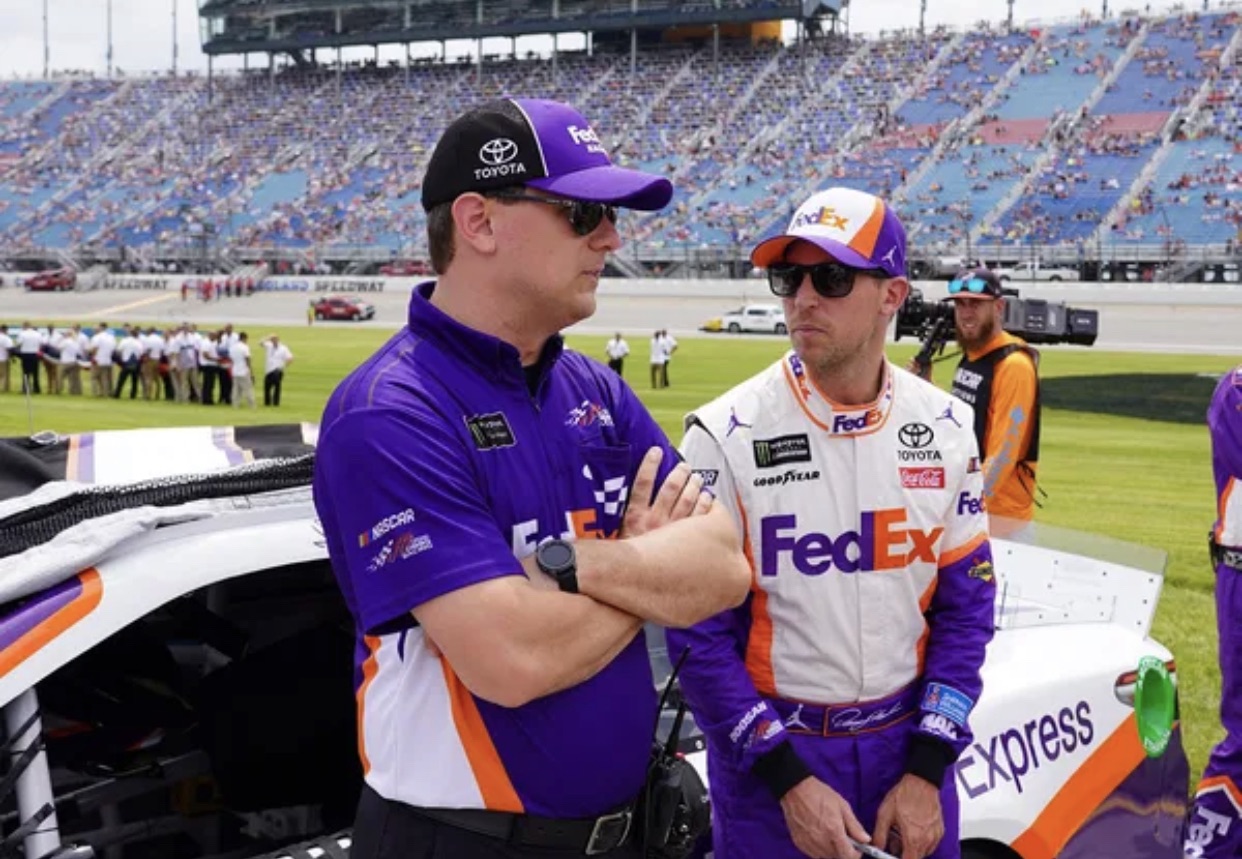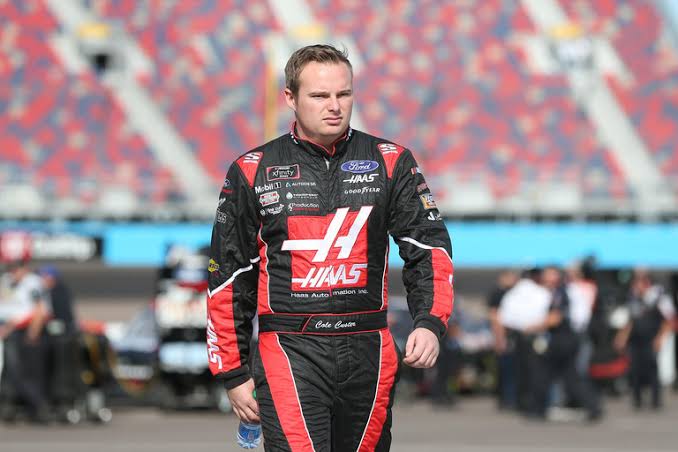Playoff Road Courses: An Electrifying Twist in the NASCAR Season
Road courses in the NASCAR playoffs always bring a fresh and thrilling twist to the season. While fans are used to seeing their favorite drivers dominate the traditional ovals—whether on high-speed super speedways or tight short tracks—road courses introduce an entirely different challenge. These unique tracks have the power to shake up the competition and turn the playoffs on their head. One such example came from Watkins Glen, where two unexpected non-playoff drivers, Chris Buescher and Shane van Gisbergen, battled for the top spot. Remarkably, none of the top five finishers at Watkins Glen were among the playoff contenders, proving just how unpredictable these road courses can be. The only playoff drivers to sneak into the top 10 were Chase Briscoe, who finished 6th, and Austin Cindric, who placed 10th.
The inclusion of Watkins Glen in the playoff schedule has certainly upped the excitement for both fans and drivers alike. With the added unpredictability of road courses, it leaves everyone on edge, eagerly waiting to see what will unfold. However, the spotlight now shifts to another road course later in the playoffs—the Charlotte ROVAL. The anticipation is building as fans wonder what the newly reconfigured track has in store. The changes made to the ROVAL, spearheaded by Speedway Motorsports Inc. (SMI), have stirred plenty of conversation in the NASCAR community. In fact, the reconfiguration even sparked criticism from some, including Denny Hamlin’s crew chief, Chris Gabehart, leaving many wondering how these adjustments will impact the race.
Chris Gabehart’s Criticism of the Charlotte ROVAL’s New Design
The rework of the Charlotte ROVAL is far from a minor tweak—it’s a significant overhaul that alters key elements of the track, including its corners, straightaways, and the famous chicane. Marcus Smith, CEO of Speedway Motorsports, shared that these modifications were aimed at enhancing the competition by providing more opportunities for drivers to overtake one another. Smith explained, “With two distinct braking zones, drivers will have better chances to pass, which should make for an even more exciting race.” He also noted that increasing the off-throttle time will give drivers more flexibility in controlling their cars, adding to the strategic elements of the race.
Interest in the redesigned Charlotte ROVAL resurfaced after a fan posed a question to NASCAR journalist Matt Weaver, asking which track presented the biggest unknowns in the playoffs. Weaver didn’t hesitate to point out the new configuration of the ROVAL, specifically highlighting Turn 7 as a major wildcard. The adjustments made to the notorious Turn 7 have stirred plenty of buzz among drivers and fans alike. What used to be a tricky corner is now even more challenging, thanks to its sharper, hairpin design that leads from the newly reconfigured Turn 6.
Turn 7: NASCAR’s Newest Calamity Corner?
Among the changes to the ROVAL, Turn 7 has garnered the most attention. This hairpin turn is tighter and more difficult to navigate than before, leaving drivers with a much smaller margin for error. NASCAR driver Ryan Blaney offered his perspective on the new Turn 7, stating, “The heaviest braking zone will definitely be Turn 7. It’s going to provide great opportunities for passing, with drivers diving in and taking big risks. I thought it was tight before, but now it’s even more challenging.”
Fans are already buzzing with speculation about the potential chaos that Turn 7 might create. With its new design, some have even taken to calling it “Calamity Corner,” anticipating that the sharper turn will lead to plenty of contact and crashes. This excitement has only grown after witnessing the intense racing at Watkins Glen, where a dramatic crash involving Brad Keselowski and William Byron saw Byron’s car perched on top of Keselowski’s after the two collided. Fans are now predicting that Turn 7 at the ROVAL could become the scene of similar chaotic moments. One fan even humorously remarked, “Turn 7 is going to be dive-bomb city,” referring to the aggressive moves drivers will likely attempt to overtake each other.
Fans Draw Comparisons to the Daytona Road Course
As fans dissect the new track design, some have been quick to compare the Charlotte ROVAL’s Turn 7 to the hairpin turns seen at the Daytona Road Course, last raced in the 2021 NASCAR Cup Series. In that race, Christopher Bell edged out Joey Logano for the win, with both drivers navigating Daytona’s tight Turns 3 and 5. However, many fans agree that these turns are tame compared to the revamped Turn 7 at Charlotte, which is expected to deliver even more intense, close-quarters racing. One fan even commented, “Wow, the new Turn 7 makes the ROVAL look like a mini Daytona Road Course.”
Even before the reconfiguration, the former Turn 8 at the ROVAL—now Turn 7—had a reputation for being a hot spot for crashes. Last year, during a practice session at Charlotte, Kyle Larson experienced a heavy crash at this exact location, and that was before the corner became even sharper. With the upcoming race fast approaching, fans are bracing themselves for what could be one of the most thrilling, edge-of-your-seat moments of the playoffs.
Trucks Series to Make Its ROVAL Debut Next Year
While most of the attention has been on how the Cup and Xfinity Series drivers will handle the new layout at the ROVAL, excitement is also brewing for the Truck Series, which will make its debut at the track next year. Watching the larger trucks attempt to maneuver through the tight corners will undoubtedly present its own set of challenges. Some fans are already predicting that Turn 7 will be particularly brutal for the trucks, with one fan remarking, “Whether it’s the Next Gen cars or trucks, Turn 7 is going to be pure chaos. I wouldn’t be surprised if the trucks have a ridiculous crash there next year.”
What Will Happen at Turn 7?
As anticipation builds for the next NASCAR playoff road course at the Charlotte ROVAL, one thing is certain: Turn 7 is bound to be a focal point of action. Fans are buzzing with excitement, speculating about the crashes, daring overtakes, and potential upsets that could happen at the newly reconfigured corner. With the unpredictable nature of road courses and the recent changes to the track, the upcoming race promises to be nothing short of exhilarating.
What are your thoughts on the changes to Turn 7? Let us know in the comments below!




